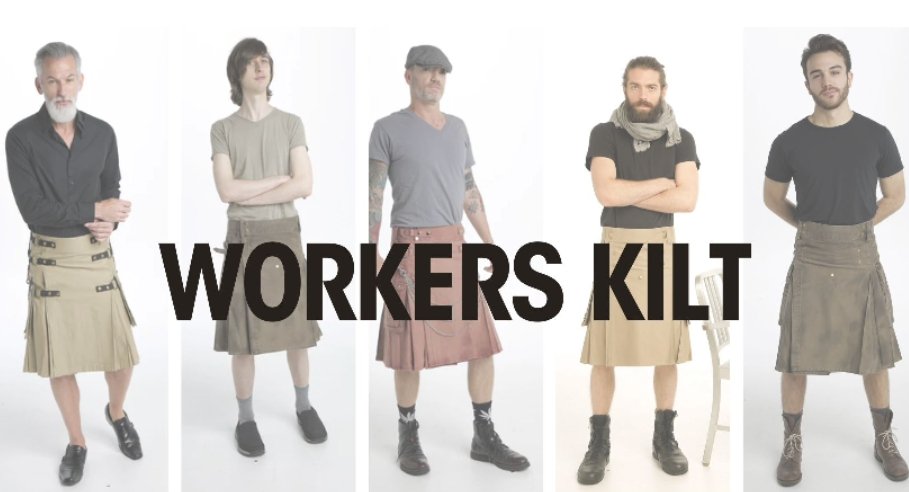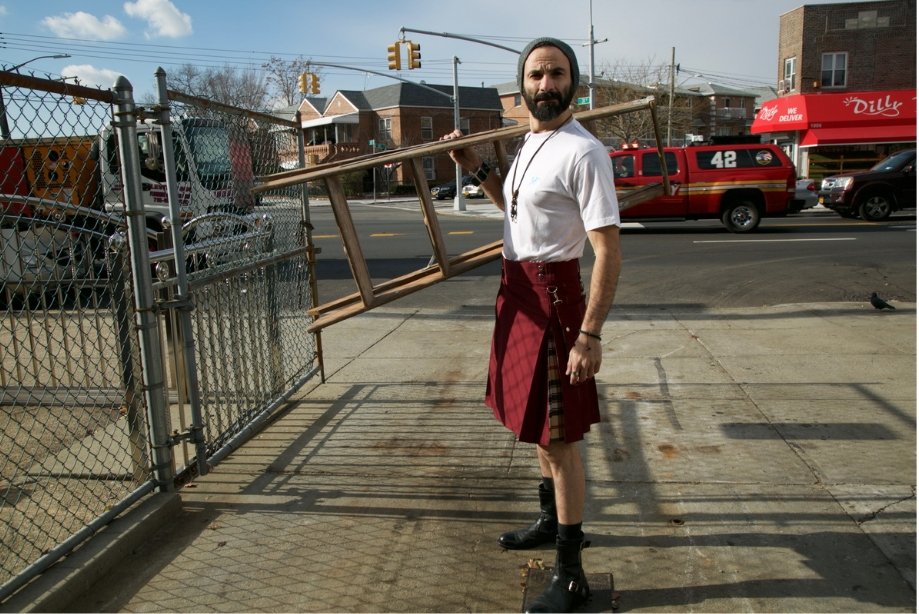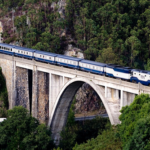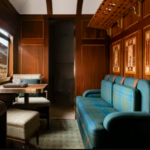The worker’s kilt represents more than just a garment; it embodies a blend of practicality, durability, and cultural heritage that has evolved over centuries. Originating from the rugged landscapes of 16th-century Scotland, where Highlanders sought a garment suited to their demanding lifestyles, the workers kilt has transcended its historical roots to become a staple in modern workwear. Made from heavy-duty materials such as cotton, denim, or canvas, workers’ kilts are designed to withstand the rigors of labor-intensive activities while offering comfort and unrestricted movement.
Today, the workers kilt continues to be celebrated for its functional design, featuring elements like multiple pockets, tool loops, and reinforced stitching that cater specifically to the needs of professionals in various industries. Beyond its practicality, the workers kilt symbolizes Scottish heritage and craftsmanship, with each design paying homage to centuries-old traditions. Whether worn on construction sites, in workshops, or during outdoor pursuits, the workers kilt remains a testament to resilience and tradition, adapting seamlessly to contemporary work environments while preserving its cultural significance.

Understanding the Workers Kilt
Before delving into the pros and cons of wearing a workers kilt for work, it’s essential to grasp its distinct characteristics and purpose. Workers kilts are specifically tailored for labor-intensive activities, offering durability and functionality beyond traditional kilts. Typically crafted from heavy-duty materials like cotton, denim, or canvas, these kilts are designed to withstand the rigors of manual labor. They feature practical elements such as multiple pockets, tool loops, and reinforced stitching, catering to the practical needs of workers across various industries. Workers kilts provide a comfortable and unrestricted alternative to trousers, facilitating ease of movement while ensuring essential tools are readily accessible. The robust construction of these kilts not only enhances their longevity but also underscores their suitability for demanding work environments. From construction sites to outdoor labor, workers’ kilts have evolved to meet the modern worker’s demands, blending traditional craftsmanship with contemporary utility.
The Historical Context of Kilts
Kilts trace their origins back to 16th-century Scotland, where they emerged as a practical garment for Highlanders navigating the rugged terrain and unpredictable weather of the Highlands. Originally made from wool and adorned with tartan patterns specific to each clan or family, kilts became emblematic of Scottish identity and cultural heritage. Beyond their functional utility, kilts symbolized familial pride and solidarity within Highland communities. Over centuries, kilts evolved from a purely practical attire into a cherished cultural symbol. They were worn not only for everyday wear but also for formal occasions and cultural celebrations, reaffirming their status as a revered national icon. The intricate patterns and colors of tartan denoted lineage and allegiance, preserving clan traditions through generations.
The Appeal of Wearing a Workers Kilt
The idea of wearing a kilt, particularly a workers kilt, to work might seem unconventional, but it has several appealing aspects:
1. Comfort and Mobility
One of the primary reasons people consider wearing a kilt is the unparalleled comfort it offers. Unlike trousers, a kilt does not restrict movement, allowing for greater freedom and flexibility. This can be particularly beneficial for workers who need to bend, stretch, or squat frequently. The breathable fabric of a kilt also helps keep the wearer cool, which is an advantage in physically demanding jobs.
2. Durability
Workers kilts are constructed from robust materials designed to withstand harsh working conditions. Whether you’re working on a construction site, in a workshop, or outdoors, a worker’s kilt can endure the rigors of manual labor without wearing out quickly. The reinforced stitching and durable fabrics ensure that the kilt remains in good condition even after prolonged use.
3. Functionality
Modern workers’ kilts are designed with practicality in mind. They often come with an array of pockets and loops to hold tools, nails, and other work essentials. This eliminates the need for a tool belt, reducing the weight and bulk around your waist. The accessibility of tools and supplies can enhance productivity and efficiency, making the workers kilt a convenient choice for various trades.
4. Style and Identity
Wearing a kilt can be a bold fashion statement that sets you apart from the crowd. It can reflect a sense of individuality and pride in one’s heritage. For those who have Scottish roots or simply admire the culture, wearing a kilt can be a way to express personal identity and cultural appreciation. Additionally, kilts have a timeless appeal that can add a touch of uniqueness to your work attire.

Practical Concerns of Wearing a Workers Kilt
While the idea of wearing a workers kilt for work has its advantages, there are also practical concerns to consider. First, weather conditions play a significant role. Kilts are traditionally worn without undergarments, which might not be ideal in all climates. In colder environments, a kilt might not provide sufficient warmth and protection. Conversely, in extremely hot and sunny conditions, the exposed legs might be susceptible to sunburn. It’s important to consider the climate and weather patterns in your area before opting for a workers kilt as your daily work attire. Additionally, workplace acceptance is another key factor.
Not all workplaces might be accepting of non-traditional workwear. While some employers and colleagues might appreciate the unique choice, others might view it as unprofessional or distracting. It’s crucial to assess the culture and dress code of your workplace before making the switch to a kilt. In some cases, it might be necessary to seek approval from your employer or HR department. Safety concerns are also paramount. In certain work environments, wearing a kilt might pose safety risks. For example, in jobs that involve heavy machinery, moving parts, or hazardous materials, the loose fabric of a kilt could potentially get caught or pose a tripping hazard. It’s essential to evaluate the specific requirements and safety protocols of your job to ensure that a kilt is a safe and practical choice.
Real Life Experiences & Testimonials
To understand the practicality and impact of wearing a workers kilt, let’s explore real-life testimonials. James, a construction worker from Scotland, loves the freedom and tool pockets, noting it reflects his heritage. Sarah, a landscaper in the US, finds it cool and functional with multiple pockets, helping her stand out. Mike, a Canadian carpenter, praises its durability and strategic pockets, saying it’s a practical choice for his work. These experiences highlight how workers’ kilts offer freedom of movement, functionality, and a sense of heritage, making them a viable option for various trades and professions.
How to Choose the Right Workers Kilt
If you’ve decided to give the workers kilt a try, here are some tips to help you choose the right one:
1. Material: Choose a kilt made from durable and breathable materials such as heavy-duty cotton, denim, or canvas. These fabrics can withstand the demands of manual labor while keeping you comfortable throughout the day.
2. Pockets and Loops: Look for a kilt with ample pockets and loops for holding tools and supplies. The placement and size of the pockets should be convenient and easily accessible.
3. Reinforced Stitching: Ensure that the kilt has reinforced stitching, particularly in high-stress areas, to enhance durability and longevity.
4. Fit and Length: Choose a kilt that fits well and falls at an appropriate length. The kilt should allow for free movement without being too loose or too tight.
5. Adjustability: Some kilts come with adjustable waistbands or buckles, allowing you to customize the fit for added comfort.
6. Design and Style: While functionality is key, don’t forget to consider the design and style of the kilt. Choose a pattern or color that reflects your personal taste and complements your work environment.
Embracing the Kilt | A Symbol of Modern Versatility
The workers kilt represents more than just a practical garment; it embodies a sense of tradition, identity, and modern versatility. Choosing to wear a kilt is a statement that blends heritage with contemporary functionality. Whether you’re attracted to its comfort, durability, or unique style, embracing a workers kilt means embracing centuries of Scottish craftsmanship adapted for today’s demands. However, it’s crucial to consider practical factors such as your work environment and personal preferences. Assess whether the kilt’s features, like its sturdy materials, multiple pockets, and reinforced stitching, align with the tasks and conditions you face daily. By embracing the kilt, you not only honor its cultural significance but also embrace a garment designed to enhance comfort and mobility while making a distinctive style statement in your professional life.
Conclusion
Are you sure you want to wear a workers kilt for work? The answer depends on a variety of factors, including your job requirements, workplace culture, and personal comfort. The worker’s kilt offers numerous benefits, from enhanced mobility and durability to practicality and style. However, it’s essential to consider the potential challenges and ensure that it is a safe and acceptable choice for your specific work environment. By carefully evaluating these aspects and choosing the right kilt, you can confidently embrace this unique and functional attire, making a bold statement in both your professional and personal life.

















